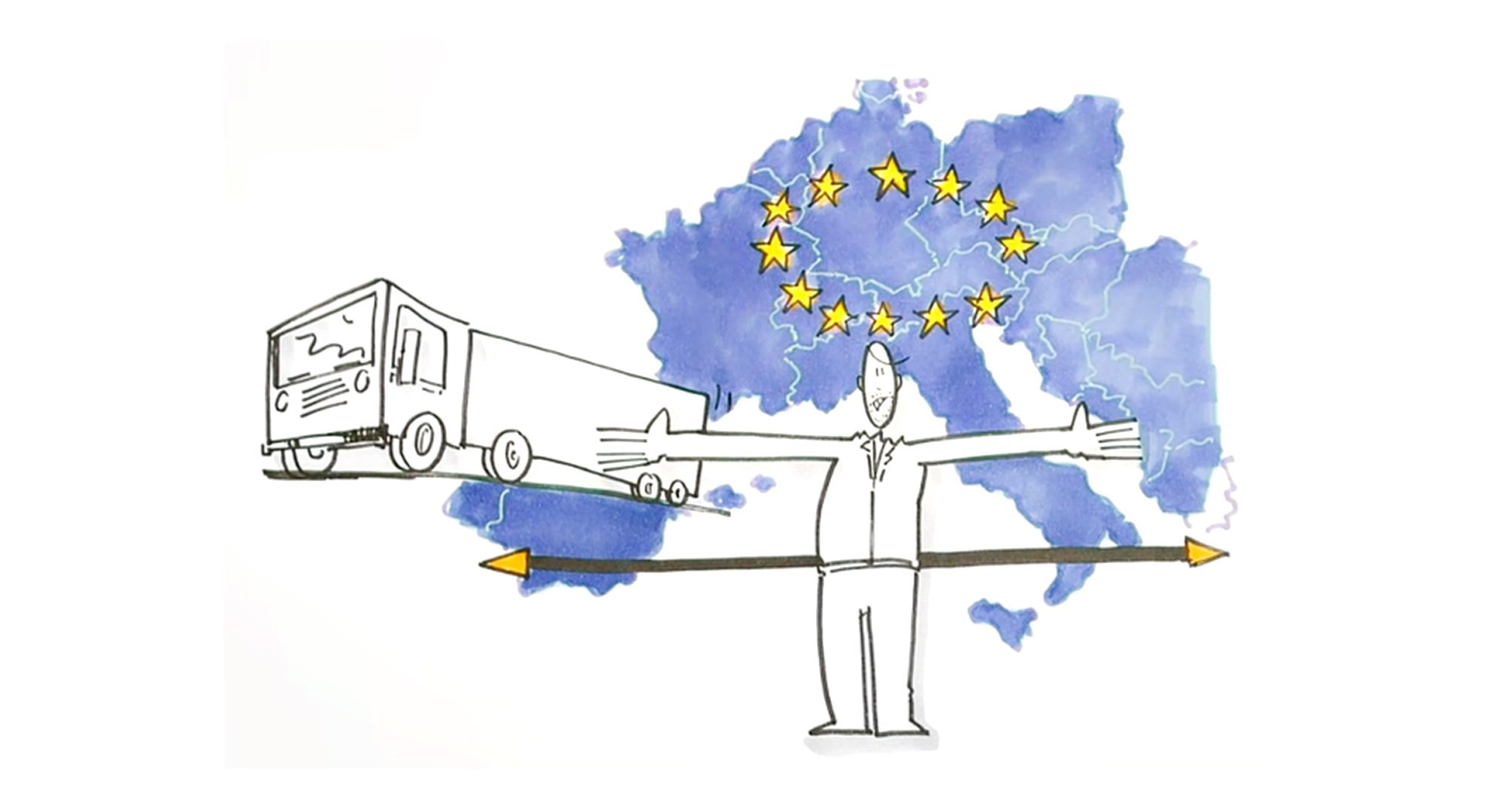In 2020, the Federal Office for Goods Transport BAG registered more than 15,000 infringements in Germany of the law on drivers under Regulation (EU) 561/2006 and the AETR. Infringements of driving times and rest period regulations as well as working time regulations are among the main reasons for fines – which is not surprising given the complexity of European regulations on driving times and rest periods. A multiplicity of national working time regulations that also play an important role in scheduling make the situation even more complicated. Calculating driving times constantly poses challenges for both vehicle crews and fleet managers. The VDO Fleet Working Hours fleet management software module can help resolve this dilemma.
Driving time is only one element of working time
Driving time is the time during which a vehicle is being "driven". This includes times when the vehicle is not moving, such as when it is standing at traffic lights or railway crossings. Driving time is of course only one element of working time. This is defined as the period between the start and end of work. Rest breaks and rest periods do not count as driving time or working time. Periods of availability in or outside the truck do not count as working time either. But activities such as loading and unloading or supervising loading and unloading do. Maintenance or cleaning work or the time it takes to deal with official or legal formalities are also included in working time. While uniform rules apply to driving times and rest periods, national maximum working hours can differ sharply from each other.
Other countries – other working time regulations
Different national working time regulations pose mind-boggling challenges for European fleet managers. The banal example of daily working hours alone illustrates this. For example, the maximum daily working time in France is 10 hours, but may be extended to 12 hours six times in a 12-week period. In Germany, on the other hand, the limit is 8 hours and can be extended to 10 hours, provided that an average working time and a maximum driving time of 8 hours are not exceeded. In Switzerland, drivers can work 9 hours per day and 10 hours twice a week. Dispatchers therefore always need to be aware that whether drivers are permitted to work outside of their pure driving time depends very much on where they are. It goes without saying that the rules on weekly working hours, rest periods and other matters are just as complicated.
Austria as a prime example
In Austria, working time is understood to mean driving time, other work and periods of availability. In an average of 17 or 26 weeks (depending on the collective agreement), the maximum working time may not exceed 48 hours. If periods of availability are also included, it is possible on average to work up to a limit of 55 hours a week. In individual weeks, drivers may be able to work up to 60 hours. The maximum driving time under EU regulations, in contrast, is 56 hours. Bearing in mind all the work a driver has to perform apart from driving, it is clearly very difficult for the entire 56 hours of driving time permitted in Austria to be used without running the risk of being fined.
Drivers' hours breaks are similarly misleading. EU regulations require drivers to take a break after 4.5 hours of driving. This break no longer counts as driving time, but it does count as working time – and in Austria this must generally be interrupted after 6 hours at the latest. It is therefore important to look very closely at how drivers spend their drivers' hours breaks.
One particularly impressive example is the general ban on driving trucks over 7.5 t, which applies in Tyrol from 3 p.m. on Saturdays through to 10 p.m. on Sundays. The Tyrolean police recorded an egregious 1260 violations of this ban alone between January and March.
Growing pressure on fleet managers
These and countless other regulations make it extremely difficult for fleet managers to keep track of the regulations that particular drivers have to observe at any one time in each of the countries they are working in. This can be a huge headache for dispatchers and not only costs time but frequent otherwise avoidable fines.
Depending on the size of the fleet, the risks of fines are therefore considerable. In this context, the new European criminal register ERRU can entail severe penalties, which can even extend to the loss of a Community license.
VDO Fleet compares tachograph data with EU regulations and national laws
The time is therefore ripe for a digital solution. And a solution is now available with the fleet management software VDO Fleet, with functions that go far beyond fulfilling legally prescribed archiving requirements. The program initially reads the data from the smart tachograph as usual and saves it according to the specifications. What is new, however, is that the data is not only automatically compared with EU regulations on driving times and rest periods, but also with the working time regulations of the country in which the journeys took place. In Austria, for example, the software also checks driving activities against the Austrian Working Hours Ordinance and detects any violations. Violations by individual drivers are clearly displayed in violation reports, e.g. in the shift log or in the tachograph driver card.
This means that fleet managers no longer have to worry about different time regulations and always remain on the safe side – as do their drivers, who can be instructed accordingly. Because the function is available in all EU countries, VDO is an integrated compliance solution that provides complete transparency for an entire fleet, wherever it is operating. Violations are clearly displayed on the dashboard, which means that many problems can be quickly resolved – for example, drivers who are not complying with the law can be trained accordingly and it is possible to change to better routes if necessary. Given the complexity of national regulations, the VDO Fleet Working Hours fleet management module makes it much easier to operate fleets in compliance with the law and therefore to avoid fines.







